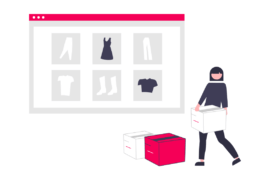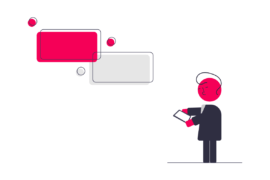We recently got the opportunity to attend the Digiday Publishing Summit held virtually. Here are 5 important insights we attained for publishers.
AdPushup recently sponsored and attended the Digiday Publishing Summit Live held from March 24 to March 26, 2020. Following what has become a new normal for events, the Summit was held virtually.
Some of the speakers included industry leaders from organizations like New York Times, Bloomberg Media, Dotdash, Atlantic Media, Washington Post, and others.
On all the three days, the event mostly focused on providing insights to publishers on building a subscription model, surviving in the post-cookie era, and shifting focus to first-party data.
We have assembled the most important insights for publishers which will help them survive the 3P cookie crisis and the inevitable financial loss during the pandemic.
Everything is Accelerated
One of the key things that were discussed was the acceleration that has been observed in the web publishing and ad tech industries. Within the last two years, some of the developments like:
- Google sunsetting third-party cookies,
- The Black Lives Matter movement inviting a cultural reckoning in the media industry,
- The pandemic impacting finances, etc.
All these have taken place simultaneously and likewise publishers came up with accelerated responses.
For example, ever since Google announced deprecating of third-party cookies, several solutions such as the Privacy Sandbox, Project ReArc, and others have turned up.
Publishers have also responded quickly to keyword blacklisting during COVID-19’s beginning. This reflects the promptness in the response of web publishers and their maturity in dealing with these crises.
First-Party Data is the New Normal
For a long time, the digital advertising industry has heavily relied on third-party cookies. But by using third-party cookies, publishers and advertisers have lost their consumer trust and compromised user privacy. This has to change now with all prominent web browsers actively taking steps to deprecate third-party cookies.
The tracking era is declining. I think the original sin of the internet media was separating the audience data from the media impressions because it inadvertently commoditized the ad inventory. The GDPR was the warning sign and a lot of people did not take that seriously. But in fact, it was the front edge of a big change.
Brain Morrisey, Editor, Digiday
For publishers, things might sound challenging – the switch from third-party to first-party data will not be easy. It will take time, money, and resources, but all these will be worth it, in the long run. In fact, ad tech has started developing first-party data solutions to help both publishers and advertisers mitigate the crises.
Experiment with Subscriptions
A larger part of the Summit focused on tips to build a robust subscriber base with a high retention rate. The COVID-19 pandemic has induced a dramatic decline in advertising revenues. In order to avoid in-house layoffs and furloughs, brands had to inadvertently pull out ad campaigns and reduce budgets.
With third-party cookies on the verge of deprecation, publishers have been left scrambling for alternatives to sustain while the digital advertising ecosystem rebuilds itself. So how do publishers cope in the meantime? The answer to that question is subscription models.
We’ve historically been an advertising led business media company, that’s been a majority part of our revenues. Through our subscription business that we launched in May 2018, we’re seeing significant growth which makes it such a valuable revenue stream.
Justin B. Smith, CEO of Bloomberg Media
Subscription models are built on first-party data where the user provides their email ID of their own accord. Publishers, in fact, have been able to retain users as well.
Apart from making essential coverage free during the pandemic, multivariate A/B testing, focus on newsletter blasts, reminding people of our mission and our importance in the moment have worked for us. And beyond that, as ad rates have dropped, we’ve been aggressively focusing on our in-house inventory for subscription promotion as opposed to programmatic.
Michael Finnegan, President, Atlantic Media
Advertising Revenue is Not Going Anywhere
The recent changes have filled many publishers with skepticism – whether advertising as a viable revenue stream or not. Despite that, experts at the Summit hinted at advertising-based revenue to survive and grow. Experts believed that there are no concrete answers at the moment because everybody is still experimenting with solutions.
There’s a lot of conversation about pulling out from advertising. But we think the advertising business will continue to be a viable option. The question lies in how we modernize and transform for a post-platform world.
Justin B. Smith, CEO of Bloomberg Media
Sara Badler, Head of Programmatic at Dotdash, believes second quarter of 2020 has helped them understand how the audience interacts with the content. Hence, a majority of publishers are expected to follow the same path and put their time into building strategies keeping their audiences in mind.
2020 is the Year of News Publishers
With most of the population sitting inside following lockdown or social isolation norms, media consumption has grown significantly. The increasing anxiety due to ongoing pandemic has made common people check news for updates.
According to Statista, global news consumption has increased by 36% in 2020. This is a direct result of news publishers experimenting with content and revenue generation.
The Atlantic, for example, dropped their paywall for essential coverage during the pandemic and noticed that it helped build trust in the audience. In return, users actively subscribed for the stories behind the paywall, thus increasing the subscriber base. The New York Times, on the other hand, set up remote teams that work in synergy to produce video content for users.
To put it simply, news publishers went the extra mile to bring essential coverage to people. In return, despite revenue challenges, they have been rewarded handsomely by increasing consumer interest and trust.
Conclusion
The Digital Publishing Summit was a learning experience for us. We learnt that large-scale events can also take place virtually and provide industry experts and leaders to connect and share ideas. We also learnt that even though alternate sources of revenue are being introduced in the web publishing industry, digital advertising will continue to thrive. All we need to do is build a digital advertising ecosystem where user data is not compromised.
FAQs
A company’s first-party data is information it collects directly from its customers. The mosaic of data marketers have at their disposal includes first-party data (also known as 1P data). Other types of data can be supplemented, enhanced, and reduced with it.
Subscription models charge customers on a recurring basis. In most subscriptions, they can renew or cancel at any time, and they decide how long and how often to receive each offer. Subscriptions are contracts between you and your customers.
Advertising is a method of attracting the attention of the public to something, usually a product or service. Adverts are means of communication in which a product, brand, or service is marketed in order to attract interest, engagement, and sales.

Shubham is a digital marketer with rich experience working in the advertisement technology industry. He has vast experience in the programmatic industry, driving business strategy and scaling functions including but not limited to growth and marketing, Operations, process optimization, and Sales.





![28 Best Supply Side Platforms (SSP) for Publishers in 2024 [The Complete List] Supply Side Platforms](https://www.adpushup.com/blog/wp-content/uploads/2022/05/undraw_chore_list_re_2lq8-270x180.png)

